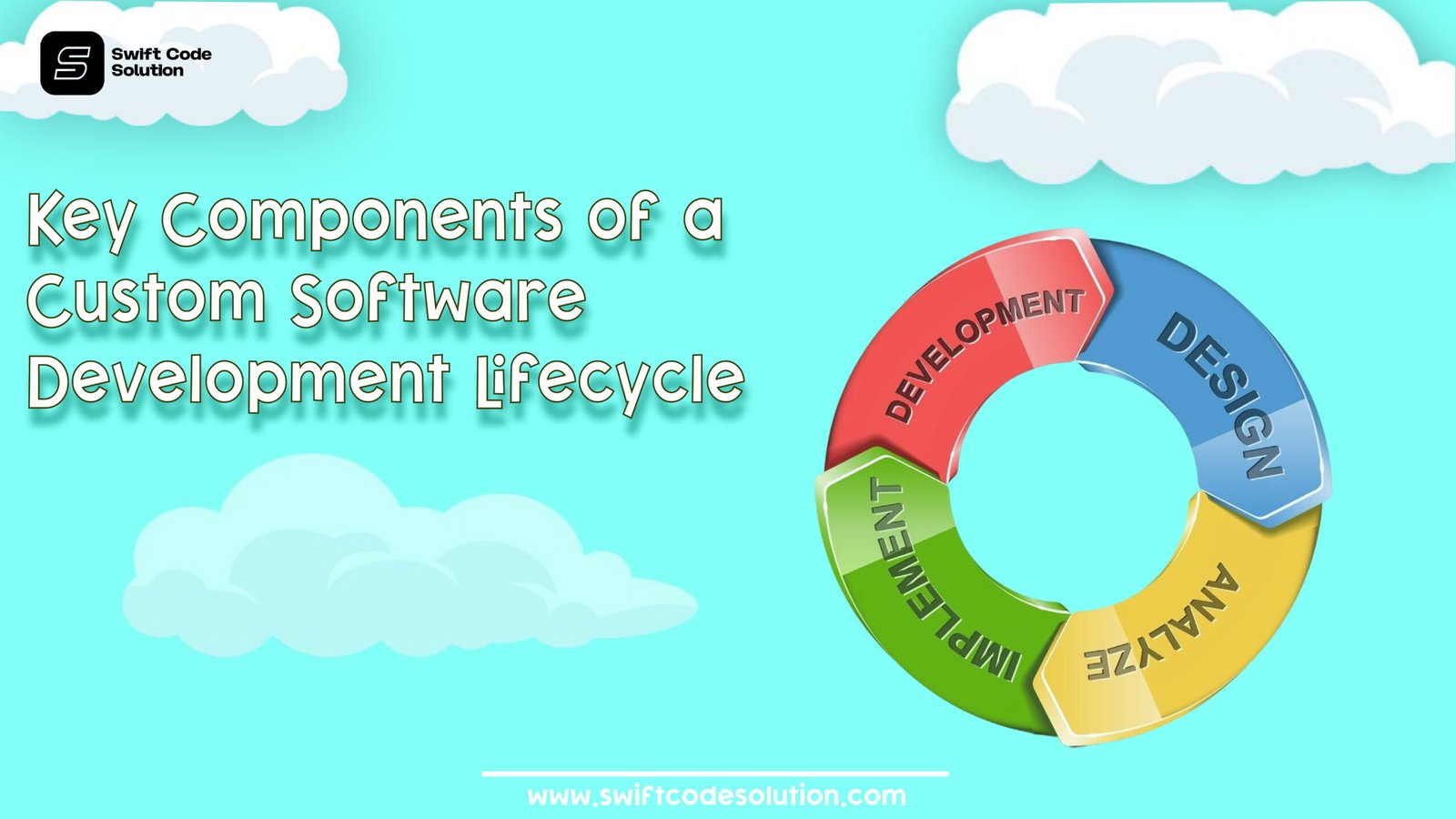In this article, we’ll walk you through the key components of the custom SDLC, how they differ from standard software development models, and why they matter for startups, enterprises, and digital transformation projects alike.
- Requirement Gathering & Analysis
Every great product starts with clarity. The first phase of any successful custom software project involves deep discovery. This phase is all about gathering insights that shape the project roadmap:
- Stakeholder interviews to understand business goals
- Market and competitor analysis
- User persona development
- Workflow diagrams and current process mapping
The end goal is a Software Requirements Specification (SRS) document. This living document serves as the foundation for every decision that follows. Skipping this step leads to misalignment, delays, and spiraling costs.
Tip: Invest time in interviews and stakeholder workshops. A few hours now can save weeks of rework later.
Business Use Case Example
A logistics company approached our team needing a fleet tracking app. They originally thought it was a GPS-only app. After requirement workshops, we uncovered needs for driver behavior scoring, automated reporting, and fuel consumption tracking. Those insights changed the whole architecture.
- Planning & Roadmapping
Once the requirements are defined, it’s time to turn them into a plan. This phase involves:
- Defining the scope and deliverables
- Choosing the right technology stack
- Estimating budget and timelines
- Building an initial product roadmap
- Assembling the development team and roles
In custom projects, change is expected. That’s why many teams use Agile or Hybrid Agile-Waterfall models. Agile offers flexibility to adapt while still staying on course.
Modern project management tools like Jira, Trello, or Azure DevOps are typically introduced at this stage.
- UI/UX Design
Before a single line of code is written, the user experience needs to be mapped out. This phase includes:
- Wireframes: Low-fidelity blueprints to align on structure
- User flows: How users will move through the system
- Interactive prototypes: High-fidelity clickable mockups
- Design systems: Colors, typography, button styles, and reusable components
Effective UI/UX design makes the software intuitive and enjoyable. It also saves time in development by providing clear guidelines to developers.
If you’re looking for a partner to guide you through user-focused planning, seamless interface prototyping, and scalable architecture, consider exploring our custom software development services. A trusted team can help reduce guesswork and streamline the full lifecycle.
- Architecture Design & Tech Stack Decisions
This often-overlooked phase is critical in custom development. Before diving into implementation, the software’s technical foundation must be set:
- Choosing between monolithic vs microservices architecture
- Selecting cloud vs on-premise infrastructure
- Deciding on databases, APIs, and middleware
- Implementing security protocols (encryption, authentication, etc.)
This is where performance, scalability, and integration capability are defined. Mistakes here can limit growth or cause reengineering down the road.
- Development (Frontend + Backend)
This is the execution phase. The developers begin building the product in sprints or phases:
- Frontend development: React, Angular, or Vue for web; Flutter or React Native for mobile
- Backend development: Node.js, Python, Java, .NET, etc.
- Database layer: PostgreSQL, MongoDB, MySQL, Firebase, etc.
- DevOps setup: CI/CD pipelines, containerization (Docker/Kubernetes), staging environments
Agile teams deliver features incrementally. This ensures early feedback and reduces long-term technical debt.
Real-World Scenario
A retail client building a POS system needed a web dashboard and tablet app. Our sprints delivered a working version every two weeks. After three sprints, the client began testing with real users, accelerating the overall launch timeline.
- Testing & Quality Assurance (QA)
Quality is never accidental. This phase involves comprehensive testing strategies:
- Unit testing: Testing individual functions/modules
- Integration testing: Ensuring components work together
- System testing: Verifying the complete product
- User acceptance testing (UAT): Stakeholders validate functionality
Security, performance, accessibility, and cross-platform compatibility tests are also conducted. Testing is automated where possible but should always include manual exploratory testing.
Modern QA tools include Selenium, Postman, Cypress, BrowserStack, and JMeter.
- Deployment & Launch
Once tested, the software is ready for deployment. This involves:
- Final code merge and build
- Deployment to staging/production environments
- Release management and rollback planning
- DNS, SSL, and hosting configurations
Many businesses adopt a soft launch (limited release) before full production to catch any last-minute bugs.
Popular CI/CD tools: GitHub Actions, Jenkins, CircleCI, Bitbucket Pipelines.
- Post-Launch Support & Maintenance
This phase is where many teams fall short. Post-launch, the real work begins:
- Monitoring app usage and crash reports
- Responding to user feedback
- Fixing bugs and patching vulnerabilities
- Releasing new features or updates
Custom solutions must be adaptable to evolving business needs. That’s why ongoing support contracts and regular codebase reviews are crucial.
For businesses extending their digital ecosystem beyond mobile or desktop, our web app development services can help you build responsive, high-performance web solutions that integrate smoothly with your custom backend.
- Documentation & Handoff
Good software is well-documented. This includes:
- API documentation
- Architecture diagrams
- Admin/user manuals
- Maintenance runbooks
- Onboarding materials for future developers
Documentation ensures future upgrades or handovers are smooth, reducing dependency on original developers.
Final Thought
Understanding the custom software development lifecycle helps you make smarter investments, avoid common pitfalls, and deliver software that truly meets your goals. Each phase, from planning to post-launch, builds toward long-term success.
Choose partners who understand your business, not just your codebase. Custom development isn’t just about features — it’s about crafting the right solution for your users, your workflows, and your future vision.








